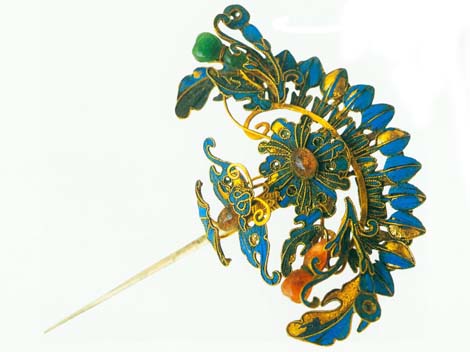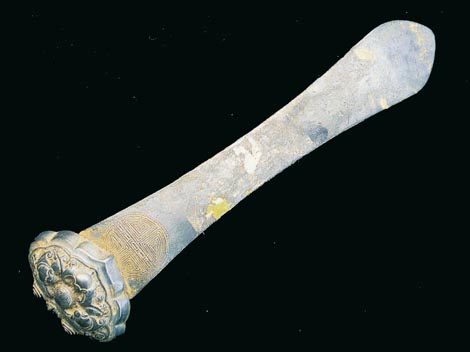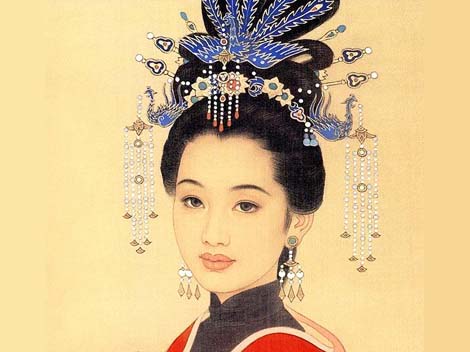Before the Qing Dynasty, both Chinese men and women would wear their hair in a coiled bun and use a hairpin to keep it in place. And women's hair ornaments were more exquisite than men's. A variety of women's hairpin styles were recorded in ancient documents, including hairpins, hair clasps, buyaos (hairpins with pendants) and gold flowers etc.

Way back in the Neolithic Age, women began to use jewelries like hairpins. In the feudal society, wearing a hairpin would symbolize a girl’s coming of age. And a hair-pinning ceremony would be held to mark the occasion. In ancient times, a hairpin was also a symbol of personal dignity. Criminals were not allowed to wear hairpins. Hairpins and hair clasps were basically similar to each other, but a hairpin was a one-strand fastener while a hair clasp was a two-strand one.

Buyao was another important piece of hair jewel for ancient women. It was a variation of a hairpin or hair clasp. A typical buyao was a hairpin adorned with movable flower branch-shaped pendants. It would constantly shake with the wearer's steps, hence the name "buyao", literally meaning "shake as you go". Most buyaos were made of gold into the shape of a dragon or phoenix and adorned with pearls and jade.

Those precious hair ornaments handed down from previous generations or unearthed as relics witnessed the passing of thousands of years, holding sweet and sad memories of the past.





